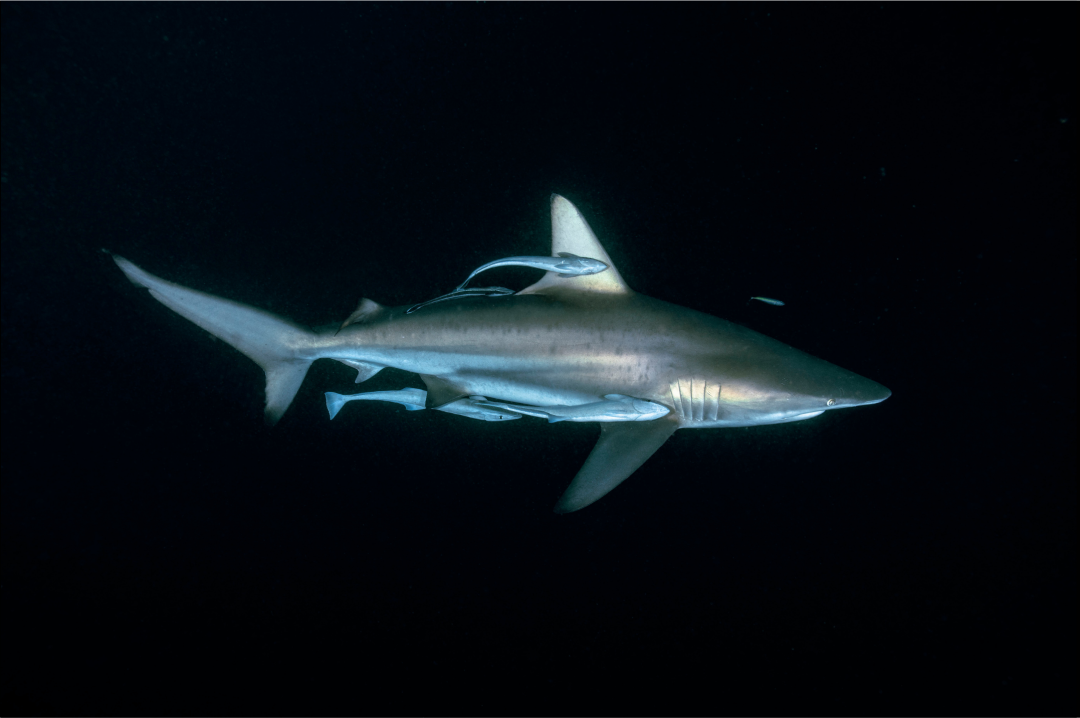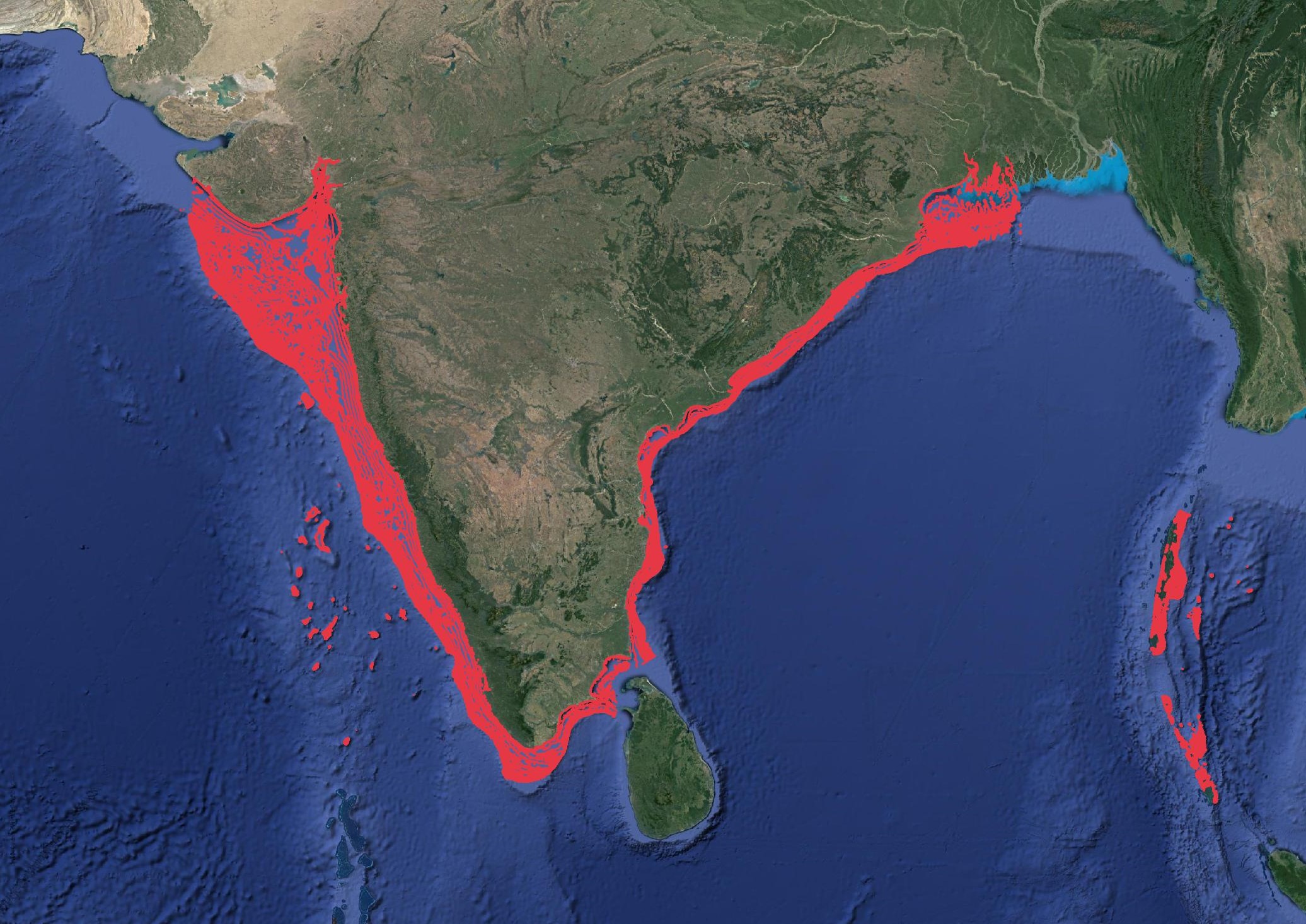Species Name
Common Blacktip Shark
Scientific Name
Carcharhinus limbatus
Family Name
Carcharhinidae
IUCN Status
Vulnerable
A dark-grey, a bluish-grey or dusky-bronze shark with a white belly; a dark band along each side to above the pelvic-fin origin, a distinct persistent black spot on the pelvic-fin tips; anal fin is unmarked; first dorsal fin has a short free rear tip.
Biology
Length: Adult blacktip reef sharks typically measure between 1.5 to 2.5 meters (5 to 8 feet) in length.
Gestation period: 10 to 12 months
Littter size: Females give birth to live young, and the litter size can range from 1 to 10 pups. The average litter size is typically around 4 to 5 pups.
Life Expectancy: The average life expectancy of blacktip reef sharks in the wild is estimated to be around 12 years.
Diet: Feeds mainly on pelagic and benthic fishes, also small sharks and rays, cephalopods and crustaceans
Habitat and Distribution
Habitat: It is a coastal and pelagic species found in tropical and subtropical waters around the world. It is highly adaptable and can inhabit a wide range of marine environments, including nearshore waters, coral reefs, estuaries, lagoons, and offshore areas. These sharks are known to frequent shallow coastal areas and can be found close to the shore.
Distribution: The common blacktip shark has a broad distribution in both the Atlantic and Indian Oceans. Specifically, its range extends from the western Atlantic Ocean to the eastern Atlantic, as well as from the western Indian Ocean to the western Pacific Ocean.
Known landing centres: Sassoon Docks, Royapuram Fishing Harbour, Cuddalore Fishing Harbour, Nagapattinam Fishing Harbour, Thoothukudi, Threshpuram, Tharuvaikulam, Vembar, Vellapatti, Cochin Fisheries Harbour, Junglighat, Burmanallah, Wandoor, and Dignabad.
Depth: Common blacktip sharks tend to prefer shallow waters, and they are commonly found at depths ranging from the shoreline to about 140 meters (450 feet).
Commercial Value
Frequently landed in commercial and recreational fisheries; the flesh is consumed locally and is exported to nearby countries.
Threats
Over-exploitation and intense fishing pressure by the fishing industry


Related Species
- Tiger Shark
- Silky Shark
- Blacktip Reef Shark
- Spot-tail Shark
- Milk Shark
- Spadenose Shark
- Bignose Shark
- Blackspot Shark
- Blue Shark
- Broadfin Shark
- Bull Shark
- Dusky Shark
- Ganges Shark
- Graceful Shark
- Grey Reef Shark
- Grey Sharpnose Shark
- Hardnose Shark
- Sliteye Shark
- Silvertip Shark
- Sharptooth Lemon Shark
- Sandbar Shark
- Pondicherry Shark
- Pigeye Shark
- Oceanic Whitetip Shark
- Irrawaddy River Shark
- Speartooth Shark
- Spinner Shark
- Whitecheek Shark
- Whitetip Reef Shark

